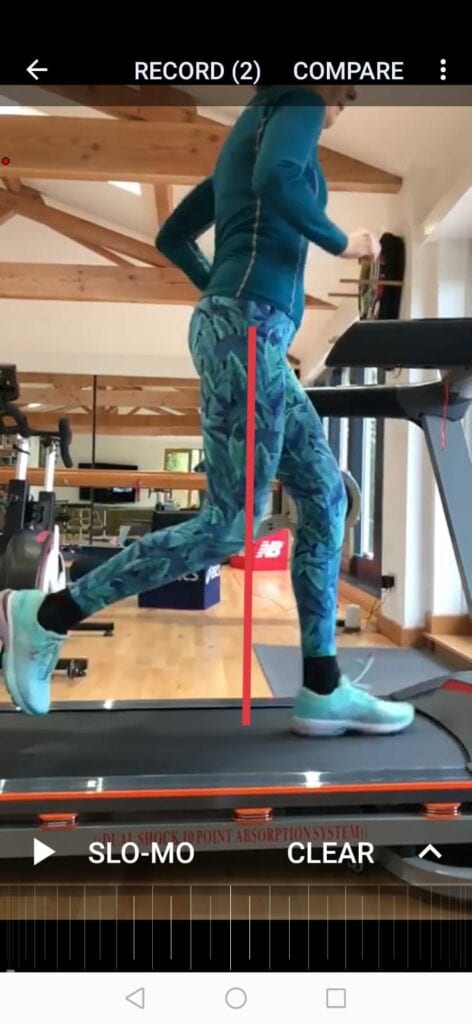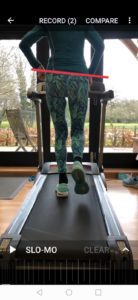Shin splints are a common injury for all runners. If left untreated, this injury can take many runners away from the sport they love. In this blog article, our friend Kate shares her experience dealing with this nagging and painful injury and her journey back into running. Kate’s physio and RBRC Expert, Angela, recounts her thoughts on Kate’s recovery and shares some advice for other runners if they are also suffering from shin splints.
A Runner’s Perspective on Shin splints
Having started running again on Jan 21 after a torn medial meniscus in my right knee I was making the most of meeting the one person allowed for exercise. The lure of the Peak District saw fabulous runs at the Roaches, Shuttlingsoe etc.
Guess what – I ran too much and got pain in my right shin which I ignored. Underplaying how bad the pain was so I could be social was not a wise move.
The final straw was Mother’s Day weekend when even hobbling to the loo was a trial. An appointment at Physiofit on Tuesday was very thorough and I had strict instructions to follow. I found the web-based exercises good to follow and having to tick that I’d done them motivating. Luckily cycling was ok which kept me sane and good friends who were happy to meet for coffee in the park.
After 3 weeks I was much improved after 2 further sessions of physio. I started walking normally and was pleased with an 8.5 mile walk on Good Friday so was able to start running/walking. Another 2 weeks on and I’m back to near normal training. However, I am sticking to the rehab exercises meticulously and limiting my running to 3 – 4 times a week. Cross-training on the bike and rest days will continue.
My take home message is don’t ignore shin pain. Take advice early and it can resolve quickly. Spending time on strength and conditioning is invaluable to keep injuries at bay!
-Kate
A Physio’s Perspective:
One of the most common questions we get, is “I am injured, when can I run again?” One of the last things a runner wants to hear is “Stop running” but in some cases, it is the only way to protect the tissues from a more serious injury and the potential of a longer spell of rest. Kate was in so much pain with her shin, she didn’t argue! Sometimes it is safe to run with a mild injury, but shin pain is not one of them as it can quickly develop into a stress fracture!
What caused Kate’s shin pain?
A combination of weak calf and glute muscles and a spike in activity or change in activity places an increased load on the muscles and tendons that lift the foot up just before impact, where they attach to the lower shin bone (tibia). The constant pulling on the muscle causes inflammation along the lower border of the inside of the shin (Medial Tibial Stress Syndrome or shin splints). The bone can quickly become bruised, but if you listen to your body, like any other bruise, it settles quickly. If you ignore it, it can progress to a stress fracture which is months off from running.
Who gets shin pain?
It is more common in less experienced runners as they build up a tolerance to running but can occur after a sudden change in training such as hill running or the following injury in more experienced runners. In Kate’s case, she had picked up a knee injury and had therefore reduced her load. Because she is fit, she did not realise just how much a drop in mileage over the last few weeks had affected her strength and the capacity of her bones to withstand the normal load she was previously doing.
In essence, she came back too much, too soon, meaning the tendons and bones could not adapt to the new load fast enough. The result: pain, swelling and tenderness along the lower inside of the shin bone = shin splints!
What can I do whilst I rest?
Kate was on an enforced rest period for 2 weeks, so we set about looking at all the factors that had caused the injury. Simply going back doing the same is a recipe for further misery! Injuries are a great opportunity to check how you run and identify any weaknesses or training errors, so make sure you see a physio with expertise in the demands of running.
We were able to assess Kate’s running technique from some footage taken just before the injury. We could see that her hip dropped on impact because of weak gluts, and she had an overstride (where your foot lands a long way in front of your body when you run), both high-risk factors for developing shin splints.
We set her some bodyweight exercises targeting her soleus and gastroc muscles in the calf (you need to do both sets of calf muscles in different positions) and some trunk and glut stability work. In her determination to get back running ASAP, Kate was so diligent in addressing the issues and in keeping her sane, we let her do some cross-training of either a swim or cycle at the same tempo or heart rate as the running session she was replacing.
When can I run again?
If the pain hurts in the bone, the advice is always to rest until you can hop up and down pain-free again. You need to return to running gradually, allowing the body to adapt by avoiding back to back days for a few weeks. When we are trying to protect an injury, we often decide to “run slow” – sadly, this often results in a lower cadence (steps per minute) and means we are on the ground for longer, causing more, not less pressure on the bones and tendons. Shorter, pain-free, faster intervals but less of them are usually safe to maintain good technique but fewer impact forces.
You need to track your load carefully with an app like Strava, so you avoid the pitfalls of too much too soon and plan the recovery days when you cross-train or work on strength. If you need some individual help, Physiofit help runners of all standards with the prevention and treatment of running injuries both in-person and online.
If you are injured or want to change your cadence, correct an overstride or develop an individual running strength programme, ask us for more information about how we can help you run further and faster without pain on 01625 590444 or visit our website www.physiofit.co.uk.



